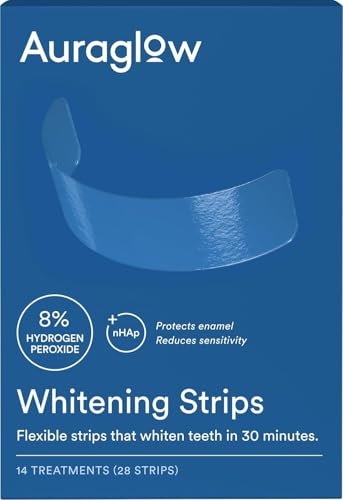Table of Contents
Items:
Dental contouring, also known as tooth reshaping, is a cosmetic dental procedure aimed at improving the aesthetics of one’s smile. Through this procedure, minor imperfections such as uneven teeth or small chips can be corrected, resulting in a more symmetrical and harmonious smile. Dental contouring is a popular choice among individuals seeking a minimally invasive solution to enhance their smile.
One of the key benefits of dental contouring is its ability to address minor dental imperfections. For instance, if you have small chips or irregularities in the shape of your teeth, dental contouring can help smooth out these areas, creating a more uniform appearance. Additionally, dental contouring can also be used to reshape pointy or misaligned teeth, further enhancing the overall aesthetics of your smile. With the procedure being relatively quick and painless, it is no wonder why dental contouring has become a preferred option for those looking to enhance their smile’s symmetry and harmony.
However, it’s important to note that dental contouring may not be suitable for everyone. The procedure is most effective for individuals with minor dental imperfections and adequate tooth enamel. If you have more significant issues such as large cracks, deep chips, or extensive tooth decay, other dental treatments like dental veneers or crowns may be recommended. It is essential to consult with a dental professional who can assess your specific case and determine whether dental contouring is the right option for you.
Understanding Dental Contouring: Enhancing Your Smile’s Aesthetics

Dental contouring, also known as teeth reshaping, is a popular cosmetic dental procedure aimed at enhancing the aesthetics of your smile. This minimally invasive treatment involves the removal of a small amount of tooth enamel to improve the shape, size, and overall appearance of your teeth. By carefully sculpting and reshaping the enamel, dentists can address various minor imperfections and create a more symmetrical and harmonious smile.
One of the most significant benefits of dental contouring is its ability to improve the symmetry and harmony of your smile. By shaping and resizing teeth, dentists can correct unevenness, pointy or jagged edges, overlaps, and other minor flaws. This not only enhances the overall appearance of your smile but also boosts your self-confidence and self-esteem. Dental contouring is particularly effective for individuals with minor imperfections, such as small chips, shallow pits, or irregularly shaped teeth. Additionally, the procedure can be combined with other cosmetic treatments like teeth whitening to achieve a more comprehensive smile makeover.
The Science Behind Dental Contouring: How Teeth Reshaping Works

Dental contouring, also known as teeth reshaping, is a cosmetic dental procedure that involves the removal of small amounts of tooth enamel to alter the shape, length, or surface of the teeth. This procedure is commonly used to correct minor imperfections, such as uneven edges, small chips, or slightly overlapping teeth.
The process of dental contouring begins with an initial consultation where the dentist will assess the patient’s dental health and determine if they are a suitable candidate for the procedure. If deemed appropriate, the dentist will then carefully remove small amounts of enamel from the targeted areas using specialized dental tools. This reshaping process is done gradually and meticulously to achieve the desired result while preserving the strength and integrity of the teeth. Finally, the dentist will smooth and polish the newly contoured teeth to create a natural and harmonious appearance.
Dental contouring is a precise and delicate procedure that requires the skill and expertise of a trained dentist. It is important to note that this treatment is generally recommended for individuals with healthy teeth and gums, as it does not address issues such as cavities, gum disease, or major misalignment. Additionally, the extent of tooth reshaping that can be achieved through dental contouring is limited by the individual’s natural tooth structure and overall oral health. Therefore, it is important to consult with a professional dentist to determine the suitability of dental contouring for your specific needs.
Factors to Consider: Is Dental Contouring Right for You?

Dental contouring, also known as teeth reshaping, is a cosmetic procedure that can significantly improve the appearance of your smile. However, before considering dental contouring as an option, there are several factors that you should take into account.
Firstly, it’s important to understand that dental contouring is suitable for individuals with minor dental imperfections. If you have major dental issues such as severely crooked teeth or extensive tooth decay, other treatments may be more appropriate. Your dentist will be able to assess your oral health and determine whether dental contouring is right for you.
Another factor to consider is your oral hygiene practices. Dental contouring involves removing small amounts of enamel from the tooth surface, which can weaken the tooth if proper care is not taken. If you already have poor oral hygiene habits, dental contouring may not be the best option for you. It’s crucial to maintain good oral hygiene practices, including regular brushing, flossing, and visits to your dentist, to ensure the longevity of your reshaped smile.
Keep in mind that dental contouring is a cosmetic procedure and may not be covered by insurance. The cost of the treatment can vary depending on the complexity of the case and the dentist’s expertise. It’s essential to consider your budget and weigh the potential costs against the aesthetic benefits you hope to achieve. Consulting with your dentist will help you make an informed decision about whether dental contouring is the right choice for you.
Benefits of Dental Contouring: Improving Your Smile’s Symmetry and Harmony
Dental contouring offers numerous benefits when it comes to enhancing your smile’s symmetry and harmony. Through this procedure, minor dental imperfections can be addressed, resulting in a more balanced and aesthetically pleasing appearance.
One of the key advantages of dental contouring is its ability to correct small irregularities in the shape of your teeth. Whether it’s a slightly crooked tooth, an uneven edge, or a pointy incisal surface, contouring can help create a smoother and more uniform look. By removing tiny amounts of enamel, your dentist can strategically reshape your teeth to achieve optimal symmetry, resulting in a more harmonious smile.
Additionally, dental contouring can also be beneficial in improving the overall proportions of your teeth. Uneven or oversized teeth can throw off the balance of your smile, making it appear asymmetrical. By carefully reshaping specific areas, your dentist can create a more proportional and balanced appearance. This can greatly enhance the overall aesthetics of your smile and boost your self-confidence.
In conclusion, dental contouring offers a range of benefits when it comes to improving your smile’s symmetry and harmony. With its ability to address minor dental imperfections and create a more balanced appearance, this procedure can help you achieve the smile you’ve always desired. However, it’s crucial to consult with your dentist to determine if dental contouring is the right option for your specific needs and goals.
The table below outlines the benefits of dental contouring, focusing on how it improves smile symmetry and harmony, aiding individuals considering this cosmetic dental procedure.
| Benefits of Dental Contouring | Description |
|---|---|
| Enhanced Smile Symmetry and Harmony | Dental contouring involves reshaping and sculpting the teeth to improve symmetry and balance, creating a more aesthetically pleasing smile. Irregularities such as uneven tooth lengths, rough edges, or minor overlaps can be corrected through precise reshaping, resulting in a harmonious and balanced appearance across the smile. |
| Correcting Minor Imperfections | Dental contouring effectively addresses minor cosmetic imperfections, including small chips, pits, or rough spots on the tooth enamel. By smoothing and refining the tooth surface, contouring can eliminate imperfections and create a smoother, more uniform smile texture. |
| Minimally Invasive Procedure | Dental contouring is a conservative and minimally invasive cosmetic procedure that typically requires minimal to no anesthesia. Using specialized dental instruments, the dentist gently removes small amounts of enamel to reshape the teeth, resulting in minimal discomfort and recovery time compared to more invasive treatments. |
| Immediate Results and Instant Gratification | Unlike some cosmetic dental procedures that require multiple appointments or waiting periods for results, dental contouring delivers immediate improvements to the smile. Patients can enjoy instant gratification as they see their smile transform with each tooth contouring session, boosting confidence and self-esteem without the need for lengthy treatment timelines. |
| Complementary to Other Cosmetic Treatments | Dental contouring can be combined with other cosmetic dental treatments, such as teeth whitening or dental bonding, to achieve comprehensive smile enhancements. By addressing minor imperfections and improving tooth alignment, contouring sets the stage for seamless integration of additional cosmetic treatments, resulting in a more radiant and flawless smile overall. |
| Improved Oral Hygiene and Maintenance | Smoothing and reshaping the tooth surface through dental contouring make it easier to maintain oral hygiene and prevent plaque buildup. With fewer rough surfaces and crevices for bacteria to accumulate, contouring promotes better oral health and reduces the risk of tooth decay and gum disease. Regular brushing and flossing can effectively maintain the results of dental contouring for long-lasting smile improvements. |
| Cost-Effective Cosmetic Solution | Dental contouring offers a cost-effective cosmetic solution for individuals seeking to enhance their smile without breaking the bank. Compared to more extensive cosmetic procedures such as veneers or orthodontic treatment, contouring is relatively affordable and accessible, making it an attractive option for patients looking to achieve significant smile improvements on a budget. |
Addressing Minor Dental Imperfections: What Dental Contouring Can Fix
Dental contouring, also known as teeth reshaping, is a versatile cosmetic dental procedure that can effectively address minor dental imperfections. This non-invasive treatment is designed to fix issues such as uneven tooth length, slightly chipped or cracked teeth, and small overlaps or irregularities in tooth shape. By carefully reshaping the tooth enamel, dental contouring can result in a more symmetrical and harmonious smile.
One common problem that dental contouring can fix is uneven tooth length. Sometimes, due to wear or genetics, one or more teeth may appear shorter than the surrounding teeth. With dental contouring, the dentist can reshape the longer teeth to match the shorter ones by removing a small amount of enamel. This subtle adjustment can significantly improve the overall aesthetics of your smile, creating a more balanced and pleasing appearance.
Additionally, dental contouring can address minor chips or cracks in the teeth. These imperfections, although small, can be noticeable and affect the overall attractiveness of your smile. Through the dental contouring process, the dentist can carefully reshape the affected teeth, smoothing out any rough edges and restoring a seamless appearance. By eliminating these minor flaws, dental contouring can enhance the natural beauty of your smile and boost your self-confidence.
The Procedure: Step-by-Step Guide to Dental Contouring
Dental contouring, also known as teeth reshaping, is a common cosmetic procedure that can enhance the aesthetics of your smile. This step-by-step guide will walk you through the process, providing insight into what you can expect during your visit to the dentist.
The procedure begins with a thorough examination of your teeth to determine if dental contouring is the right solution for you. If you are deemed a good candidate, the dentist will carefully remove small amounts of enamel from the targeted areas using a dental drill. This precise reshaping of the teeth allows for better symmetry and harmony in your smile. Local anesthesia may be administered to ensure your comfort during the procedure. Once the desired shape is achieved, the dentist will polish and smooth the contours for a seamless finish. In most cases, the entire process can be completed in a single visit, making dental contouring a convenient option for those seeking immediate results.
Note: Paragraphs relating to this heading should provide a detailed explanation of the step-by-step process involved in dental contouring. It is important to maintain a professional tone and provide accurate information based on scientific expertise.
Minimally Invasive Solution: Why Dental Contouring is a Popular Choice
Dental contouring is a highly popular choice among individuals looking to enhance the aesthetics of their smiles due to its minimally invasive nature. Unlike more extensive dental procedures, dental contouring requires only subtle reshaping of the enamel, making it an attractive option for those seeking a conservative approach.
One of the main reasons why dental contouring is favored by patients is its ability to address minor imperfections in a gentle and efficient manner. By carefully sculpting and reshaping the teeth, dentists can improve the symmetry and harmony of the smile, resulting in a more balanced and appealing appearance. Whether it’s correcting uneven tooth edges, reducing small chips or cracks, or slimming down enamel projections, dental contouring offers a precise and personalized solution to enhance the overall aesthetics of the teeth.
Not only is dental contouring a popular choice due to its effectiveness, but it is also favored for its minimal impact on oral health. This procedure typically does not require any anesthesia, as the removal of enamel is minimal and painless. Furthermore, the recovery time is usually brief, allowing individuals to return to their daily activities without significant disruption. Overall, dental contouring offers a minimally invasive solution that can deliver satisfying results for those looking to improve the appearance of their smiles.
Ideal Candidates: Who Can Benefit from Dental Contouring?
Dental contouring is a versatile cosmetic procedure that can benefit a wide range of individuals seeking to enhance the appearance of their smiles. Ideal candidates for dental contouring are those with minor imperfections or irregularities in their teeth. This could include individuals with slightly crooked teeth, uneven tooth lengths or shapes, or small chips or rough edges.
One of the main advantages of dental contouring is that it is a minimally invasive solution. Unlike other dental procedures that involve major alterations to the teeth, dental contouring only requires the removal of small amounts of enamel to achieve the desired results. This makes it suitable for individuals who are not willing or able to undergo more extensive treatments. Additionally, dental contouring is a relatively quick procedure that can typically be completed in a single dental visit, making it convenient for those with busy schedules.
It is important to note that dental contouring is not recommended for individuals who have more significant dental issues, such as severely misaligned teeth or extensive tooth damage. In these cases, alternative treatment options may be more appropriate. It is always best to consult with a qualified dentist to determine if dental contouring is the right option for you and to discuss any concerns or questions you may have. Ultimately, the goal of dental contouring is to help individuals achieve a more symmetrical and harmonious smile, improving their overall confidence and self-esteem.
Dental Contouring vs. Dental Veneers: Understanding the Differences
When considering dental procedures to enhance your smile, two popular options to explore are dental contouring and dental veneers. While both treatments aim to improve the appearance of your teeth, there are key differences between the two.
Dental contouring, also known as tooth reshaping, involves the gentle removal of small amounts of tooth enamel to sculpt and reshape the teeth. This procedure is typically recommended for individuals with minor imperfections such as small chips, uneven edges, or slightly overlapping teeth. Dental contouring is a conservative and non-invasive option that can provide immediate results, enhancing the symmetry and harmony of your smile.
On the other hand, dental veneers are thin porcelain shells that are custom-made to fit over the front surface of your teeth. This cosmetic treatment is used to address a broader range of dental concerns, including severely discolored or stained teeth, gaps between teeth, misaligned teeth, and even worn or chipped teeth. Veneers are a more comprehensive option, as they can completely transform the appearance of your smile by changing the shape, size, and color of your teeth.
In summary, while dental contouring is a minimally invasive procedure designed to address minor imperfections, dental veneers offer a more versatile solution by providing a complete smile makeover. It is important to consult with your dentist to determine which treatment is most suitable for your specific dental needs and goals.
Expert Dentists: Choosing the Right Professional for Dental Contouring
When it comes to achieving the best results for dental contouring, it is crucial to choose a highly skilled and experienced dentist. Not all dentists have the same level of expertise in this cosmetic dental procedure, so it is essential to do your research and select a professional who specializes in dental contouring. Look for a dentist who has received extensive training and has a proven track record in performing successful dental contouring procedures.
One way to ensure that you are choosing the right professional for dental contouring is to ask for before and after photos of previous patients. This will give you an idea of the dentist’s skills and the potential outcomes you can expect. Additionally, consider reading patient reviews and testimonials to gauge the satisfaction levels of past patients. A reputable dentist will have positive feedback and a solid reputation in the field of dental contouring. Don’t hesitate to schedule a consultation with the dentist to discuss your goals and ask any questions you may have. Choosing an expert dentist for dental contouring will ensure that you achieve the desired results and enhance your smile’s aesthetics with confidence.
Preparing for Dental Contouring: What to Expect Before the Procedure
Before undergoing dental contouring, it is important to have a clear understanding of what to expect in order to prepare yourself for the procedure. First and foremost, you will need to schedule a consultation with a qualified dentist who specializes in cosmetic dentistry. During this initial appointment, your dentist will carefully evaluate your teeth and discuss your goals and expectations for dental contouring.
In order to determine if you are a suitable candidate for dental contouring, your dentist will assess the overall health and condition of your teeth. X-rays may be taken to closely examine the structure of your teeth and identify any potential complications. It is crucial to disclose any existing dental issues, such as decay or gum disease, as these may need to be addressed before proceeding with dental contouring. Additionally, your dentist will discuss the potential risks and benefits associated with the procedure, allowing you to make an informed decision. Preparing for dental contouring also entails discussing your desired results with your dentist, as this will guide the reshaping process and help achieve your aesthetic goals.
During the Procedure: What Happens on the Day of Dental Contouring
On the day of your dental contouring procedure, you can expect a relatively quick and straightforward experience. Before the procedure begins, your dentist will thoroughly clean and prepare your teeth. This involves removing any plaque or tartar buildup and ensuring that the teeth are free of any debris.
Next, your dentist will carefully examine your teeth to determine the areas that require reshaping. Using specialized dental instruments, they will gently remove small amounts of enamel from the targeted areas to achieve the desired shape and contour. Throughout the procedure, your dentist will constantly assess the progress and make adjustments as necessary to ensure the best possible results. Once the reshaping is complete, your dentist will smooth and polish the treated teeth, resulting in a natural-looking and aesthetically pleasing smile.
Recovery and Aftercare: Tips for a Smooth Healing Process
After undergoing dental contouring, it is important to follow proper recovery and aftercare procedures to ensure a smooth healing process. Here are some tips to help you maintain your newly reshaped smile and prevent complications:
1. Take prescribed medication: Your dentist may prescribe pain relievers or antibiotics to alleviate any discomfort or prevent infection. It is crucial to take these medications as directed.
2. Avoid certain foods and beverages: For the first few days after the procedure, stick to a soft food diet to avoid putting excessive pressure on the reshaped teeth. Steer clear of hard, crunchy, or sticky foods that could potentially damage your teeth or prolong the healing process. Additionally, avoid consuming dark-colored drinks such as coffee or red wine, as they can stain the teeth temporarily.
3. Practice good oral hygiene: Maintaining proper oral hygiene is essential during the healing process. Brush your teeth gently with a soft-bristled toothbrush twice a day and use a mild mouthwash to keep your mouth clean. However, be cautious not to brush too aggressively to avoid irritating the reshaped teeth or causing bleeding.
4. Attend follow-up appointments: Your dentist will schedule a follow-up appointment to assess your healing progress. It is important to attend these appointments so your dentist can ensure that the contouring procedure was successful and identify any potential issues early on.
By following these recovery and aftercare tips, you can support the healing process and maintain the longevity of your dental contouring results. Remember to consult your dentist if you experience any unexpected discomfort or complications.
Maintaining Your Reshaped Smile: Oral Hygiene Practices to Follow
Maintaining optimal oral hygiene is crucial to preserving the results of your dental contouring procedure and ensuring a long-lasting, reshaped smile. Following a consistent oral care routine will help protect your teeth from decay, minimize the risk of gum disease, and maintain the aesthetics of your smile.
Brushing your teeth at least twice a day with a soft-bristle toothbrush and fluoride toothpaste is essential. Pay extra attention to the areas where your teeth have been contoured, ensuring that you clean all surfaces thoroughly. Additionally, make sure to brush gently and in circular motions to prevent gum irritation or enamel erosion.
In addition to regular brushing, flossing daily is crucial for maintaining optimal oral health. Flossing helps remove plaque and debris from between your teeth and along the gumline, where toothbrushes may not reach. When flossing around the contoured areas, be gentle to avoid dislodging or damaging the reshaped enamel. Consider using an interdental brush or water flosser as an alternative or complement to traditional flossing, as these tools can effectively clean hard-to-reach areas. Regular dental check-ups and professional cleanings are also important to monitor the condition of your reshaped teeth and address any issues early on. By following these oral hygiene practices, you can enjoy a beautiful, reshaped smile for years to come.
Potential Risks and Complications: Understanding the Limitations
Potential Risks and Complications: Understanding the Limitations
It is important to note that while dental contouring is generally considered safe and effective, there are potential risks and limitations associated with the procedure. One possible risk is the removal of too much enamel, which can weaken the tooth and increase the risk of sensitivity or tooth decay. However, skilled and experienced dentists will carefully evaluate the amount of enamel to be removed, ensuring it is within safe limits.
Another limitation to consider is that dental contouring is not suitable for all dental imperfections. While it can effectively address minor issues such as small chips, rough edges, or overlapping teeth, more significant problems may require alternative treatments like dental bonding, veneers, or orthodontic procedures. It is essential to have a thorough consultation with your dentist to determine if dental contouring is the right option for you and your specific concerns.
Overall, it is crucial to understand the potential risks and limitations of dental contouring before opting for the procedure. Consulting with a reputable dentist who can thoroughly assess your dental health and provide expert advice is the best way to ensure that you make an informed decision and achieve the desired results. In the next section, we will explore how to choose the right professional for dental contouring to further assist you in your decision-making process.
What are the potential risks and complications of dental contouring?
Like any dental procedure, dental contouring carries some potential risks and complications. These may include tooth sensitivity, damage to the tooth enamel, uneven tooth reshaping, and the risk of infection or tooth decay if proper oral hygiene is not maintained.
Can dental contouring make my teeth more sensitive?
Yes, dental contouring can sometimes make teeth more sensitive, especially if the tooth enamel is thinned during the reshaping process. However, this sensitivity is usually temporary and can be managed with desensitizing toothpaste or other dental products.
Is dental contouring a permanent solution?
No, dental contouring is not a permanent solution. The reshaping done during the procedure is irreversible, but natural tooth growth and wear can cause changes to the shape of the teeth over time. Additionally, if significant changes are desired in the future, alternative treatments may be necessary.
Are there any restrictions after dental contouring?
While there are no specific restrictions after dental contouring, it is recommended to practice good oral hygiene and avoid habits that may damage the reshaped teeth, such as biting on hard objects or grinding teeth. Regular dental check-ups are also important to monitor the results of the procedure.
Can dental contouring fix major dental imperfections?
No, dental contouring is typically used to address minor dental imperfections, such as small chips, uneven edges, or slightly overlapping teeth. For more significant issues, alternative treatments like dental veneers or orthodontics may be necessary.
How long does the recovery process take after dental contouring?
The recovery process after dental contouring is usually minimal. Some patients may experience slight tooth sensitivity or discomfort for a few days, but this typically subsides quickly. Most individuals can resume their normal activities immediately after the procedure.
Can anyone benefit from dental contouring?
Dental contouring is best suited for individuals with minor dental imperfections who desire subtle changes to the shape and appearance of their teeth. A consultation with a dentist is necessary to determine if dental contouring is a suitable option for each individual case.












